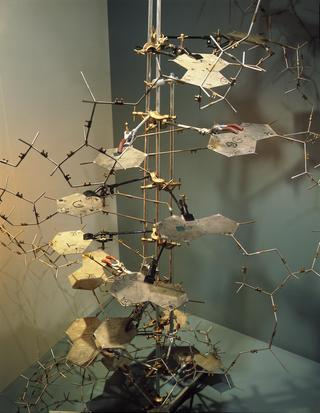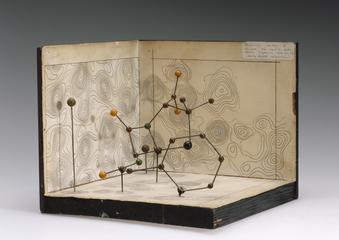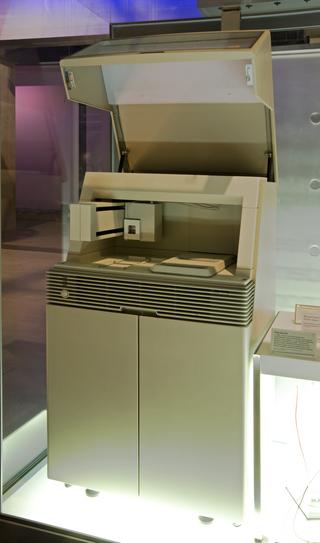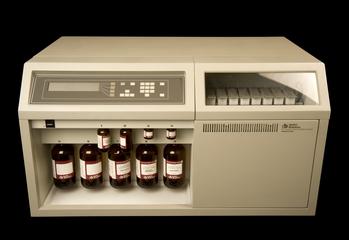
Two autoradiographs, San Francisco, United States, 1984
- Made:
- 1984 in San Francisco
- maker:
- Karen Wood






2 autoradiographs, identifying the human blood factor VIII gene and the mRNA for human blood factor VIII, prepared by Karen Wood at Genentech
An autoradiograph is used in decoding the structure of such key chemicals in the human body as DNA and RNA. One plate shows the human blood Factor VIII gene, which is involved in blood clotting. The other plate shows the messenger RNA (mRNA) for Factor VIII.
This work was particularly important as it could be used to help produce Factor VIII from genetically modified bacteria rather than from human blood. This product could be used to treat haemophilia and von Willebrand’s disease, which are both blood-clotting disorders. By using Factor VIII from bacteria rather than from human blood any risk of transmitting such blood-borne infections as AIDS and Hepatitis is eliminated. The work was conducted by the Genentech company based in South San Francisco, an area in which AIDS was unusually common in the 1980s.
Details
- Category:
- Biochemistry
- Object Number:
- 1994-674
- Measurements:
-
overall: 429 mm x 353 mm
- type:
- autoradiograph
- credit:
- Genentech Inc.




